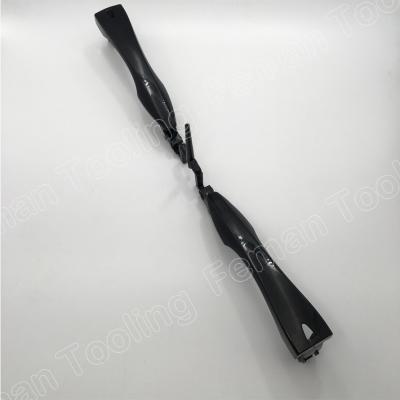Home appliance products are becoming larger and larger, and the "one-mold multi-cavity" developed to improve production efficiency has also resulted in an increasingly larger home appliance mould; at the same time, the rapid development of home appliance electronics has also brought about miniaturization and precision of parts. The machining accuracy tolerance of some molds is required to be less than 1 μm.
Therefore, only by actively adopting advanced equipment and improving the level of mold manufacturing can significant economic benefits be achieved.
High-speed cutting is generally used for large home appliance cover molds, and its surface machining accuracy can reach 0.01mm. The mold surface after high-speed milling and finishing can be used with only a little polishing, which saves a lot of time for grinding and polishing. The high-speed cutting process greatly shortens the molding cycle, thereby improving the market competitiveness of the product.
European and American mold companies use CNC high-speed milling, most of which are five-axis linkage, and the spindle speed is generally 15000-30000r/min. In addition, European and American home appliance mould companies also attach great importance to equipment renewal, and the equipment depreciation period is generally 4-5 years. Adding CNC high-speed milling machines is one of the key points of equipment investment in mold enterprises.
The high-speed scanning machine and mold scanning system provide many functions required from scanning the model or physical object to processing the desired model, which greatly shortens the development and manufacturing cycle of the mold.
Some fast scanning systems can be quickly installed on the existing CNC milling machine type machining centers to realize fast data collection, automatic generation of processing programs of various CNC systems, and CAD data in different formats, which can be used for reverse engineering of household appliances mould manufacturing. project.
The mold scanning system has been successfully applied in industries such as home appliances in Europe and the United States.
More than 80% of the plastic molds produced by many foreign plastic mold factories use hot runner technology, and the effect is very obvious.
Many European and American companies have been able to successfully use gas-assisted technology in TV casings, washing machine casings, and home appliance moulds for some thick-walled plastic parts. Gas-assisted injection molding has the advantages of low injection pressure, small product warpage, good surface quality, and easy to form products with large differences in wall thickness, which can greatly reduce costs on the premise of ensuring product quality.
The competition in the home appliance market is becoming increasingly fierce, and product replacement is accelerating. The combination of rapid prototyping technology and rapid molding technology is applied to the manufacture of home appliance moulds, that is, the use of rapid prototyping technology to manufacture prototypes of product parts, and then based on prototypes. Rapidly manufacture molds. The application of RP and RT technology from mold design to manufacturing requires only about 1/3 and 1/4 of the traditional processing method and cost.
Many home appliance mould manufacturers in Europe and the United States use rapid prototyping to cast silicone rubber moulds for a small number of plastic parts, which are very suitable for trial production of products. Some European and American countries also use aluminum to make injection molds, which can shorten the injection cycle by 25-30%, greatly reduce the weight of the mold, and shorten the grinding and polishing time by half. Germany has developed a reinforced plastic, which is used to manufacture the cavity and core of plastic molds, with a lifespan of more than 100,000 pieces.
At the European home appliance mould exhibition, rapid prototyping technology and rapid moulding technology occupy a very prominent position. There are various types of rapid prototyping equipment such as SLA, SLS, FDM and LOM, as well as institutions and companies that provide prototype manufacturing services.
